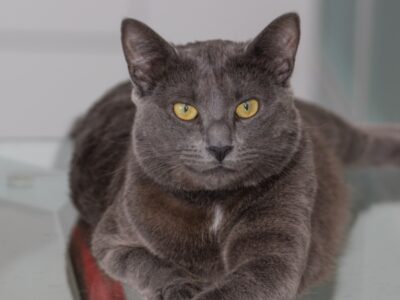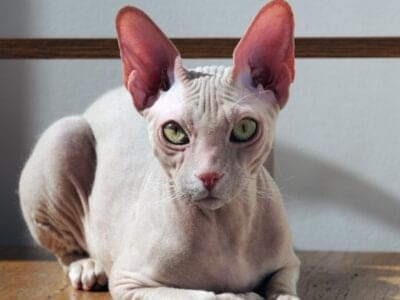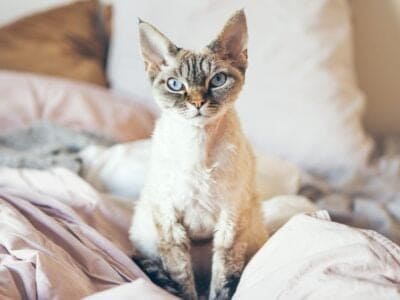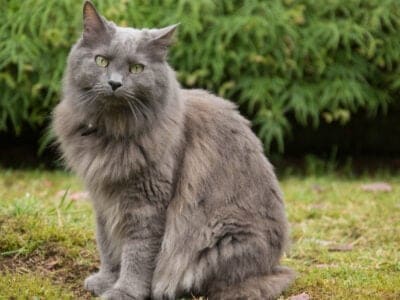Cats, which are part of the Felidae family, are some of the smallest carnivores that are protected by humans. Their retractable claws are incredibly useful, allowing them to maintain their balance, catch their prey, and protect themselves from threats. One of the telltale signs of a domestic cat is found in its skull, showing off sharp canine teeth that it inherited from its wild ancestors. With heightened hearing and smell, even cute cats can be resourceful hunters. They are one of the first animals to be domesticated.
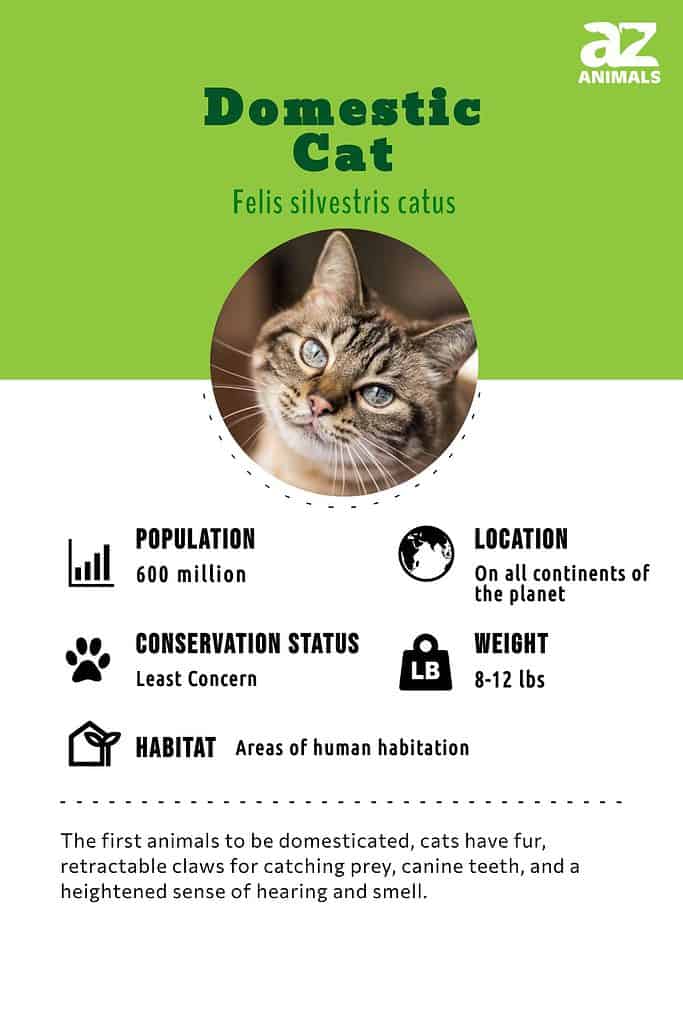
The 13 Top Cat Characteristics Listed
Cats have unique characteristics of their physique, behavior, and even their senses. Though most people will know a domestic cat when they see one, here are some of the key ways that you can determine if an animal is definitively a cat.
- Warm-blooded mammals: Cats are in the mammal family, which means that they have many of the typical traits that are associated with this class. They have fur, they have a live birth, and they feed their young milk from their bodies as babies.
- Retractable claws: The claws of a cat are a rather unique feature of its paw. While the animal is relaxed, the claws remain concealed underneath the fur and skin. Rather than residing on the top of the toe, they are found around the toe pads to prevent them from wearing down as they walk. Typically, five claws are found on each of the front paws, but only four claws are found on the back paws.
- Lone hunters but social animals: When looking for their prey, cats tend to seek out their prey on their own (though there is little need for hunting when owners will feed them). However, these animals prefer to surround themselves with other cats, humans, and even other animals, showing great affection. Plus, the mothers will typically be ferociously protective of their young.
- Verbal expression out of kittenhood: The vocal range of many mammals is minimal in adulthood, but the same is not true of cats. Their meow is biologically designed to mimic the sounds that a newborn baby makes, calling on the emotional reaction of their owners. Interestingly, this desire to attract the love of their owners can cause them to be rather jealous of any new kittens in the household.
- Live birth: The female cat will give birth to live young, which are called kittens. The kittens are often born in an amniotic sac, which is eaten by the mother. Kittens need to be nourished by their mothers until they are about 8 weeks old.
- Fast reflexes: Perhaps one of the most notable features of the cat is its ability to land on its feet. Even when falling from a height of nearly 10 feet, these animals will instinctively twist their body to land on their paws. The cat righting reflex is the same movement any time that they fall, and they can correct their positioning in as little as 3 feet off the ground.
- Impressive night vision: The tapetum lucidum in the eye of the cat allows it to view anything in the dark, only requiring 15%-20% of the light that humans need to see the same. When the cat is taking in the most light, their pupils may expand to their entire exposed surface. As kittens, their eyes don’t even open until they are about a week old, though their vision may take longer to reach better focus.
- Minimum color vision: Though cats aren’t entirely colorblind, most cats are only able to see blue, and yellow with clarity. The ability to see red and green is extremely limited.
- Heightened senses of hearing and smell: Cats can hear a tremendous range of sounds from 500 Hz to 32 kHz (Comparatively, the average person hears from 20 Hz to 15 kHz). The advanced sense of smell comes from the development of their olfactory bulb and mucosa. With a heightened pheromone sensitivity, this sense can impact their social and sexual behavior alike, despite their short snout.
- Sharp teeth: The ancestors of domestic cats significantly impacted their skull, offering a specialized jaw that includes two long canine teeth. These teeth are much smaller in domestic animals, as they don’t have to cat and kill their prey anymore. As sharp as the teeth are, their molars are hardly used for chewing food.
- Carnivorous: A cat’s diet is largely made of meat, requiring at least two grams of protein each day. This amount can vary with the weight and age of the cat. Although cats are carnivorous, many household plants and vegetables can be toxic if ingested.
- Digitigrade walking: Cats walk on all four legs, using their toes to keep their body balanced. The legs of each side of the body move together, which helps them to remain quiet as they hunt prey and avoid being detected.
- Hooked papillae on the tongue: The backward-facing hooks of the tongue play an important role in a cat’s life, as it is used for self-grooming. Made of keratin (an important protein in hair), the fur will collect in the stomach and cause the cat to spit up their collected hair.
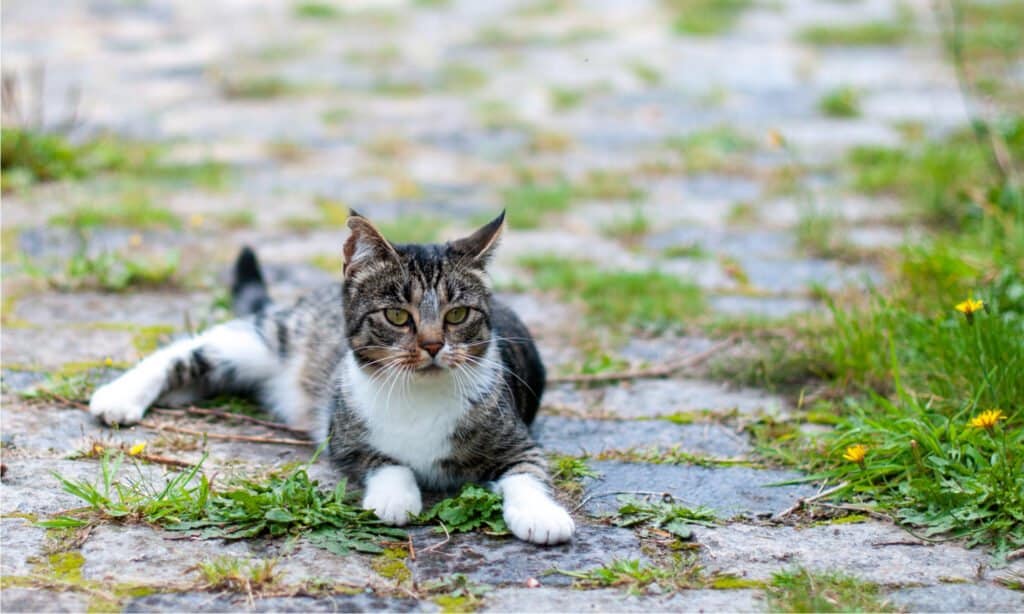
Though cats aren’t entirely colorblind, most are only able to see blue and yellow clearly.
©aRandomEye/Shutterstock.com
Exceptions to the Cat’s Characteristics
Even though the characteristics of a cat are rather specific, there are a few cats that don’t necessarily follow these criteria. Take the Maine coon cat – though it has the same sight and retractable claws, the body is fairly similar to that of a smaller wildcat. This type of cat can grow to be up to 27 pounds (when neutered), reaching about 16 inches tall.
The Scottish fold is another exception. While most cats have alert and upright ears, the natural ears of this breed will fold just below the tip, causing the tip of the ear to fold downward.
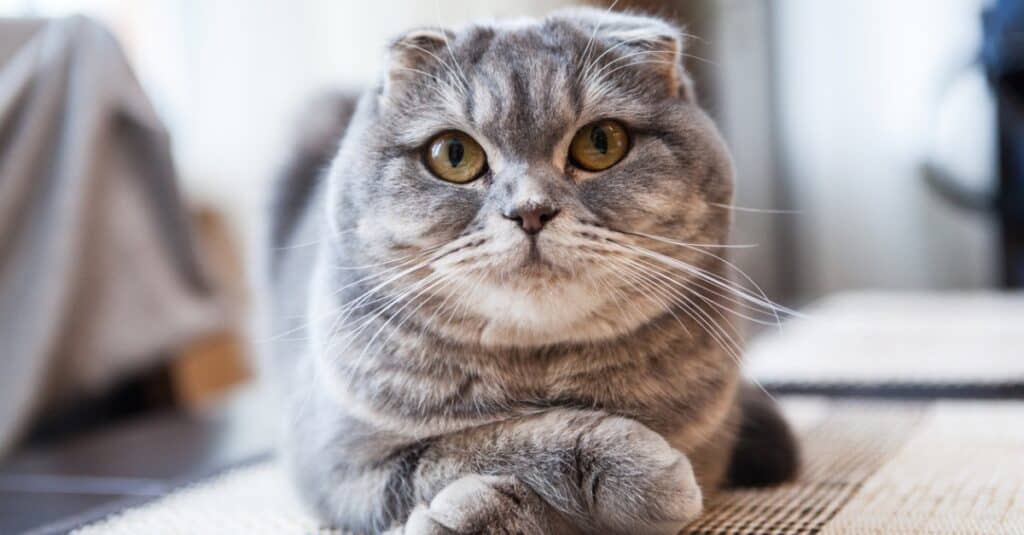
The ears of the Scottish fold cat breed will fold just below the tip, causing the tip of the ear to fold downward.
©iStock.com/lafar
Types of Cat Coats
Though the genetic makeup of cute cats may vary slightly, their coats offer a drastic range. The breeds are primarily differentiated by their coloring, texture, and patterns. The 6 patterns that usually are found on these cats include:
Tabby
Tabby patterns are striped and/or spotted on most of the coat. Often, the coat will be paired with a white chest, white feet, or a white tail. The lines of the face form an M, and they are typically brown, grey, and orange. The patterns are incredibly varied, offering blotchy lines and spots. Even with the white chest and belly, the colors of a tabby often are just variations in darkness.
Tortoise shell
Sometimes referred to as a “torte,” this coat mixes both black and orange, though the coat is sometimes accented by brown or gold. Most of the cats with these markings are female, but the males that have a tortoiseshell coat are almost always incapable of fathering young.
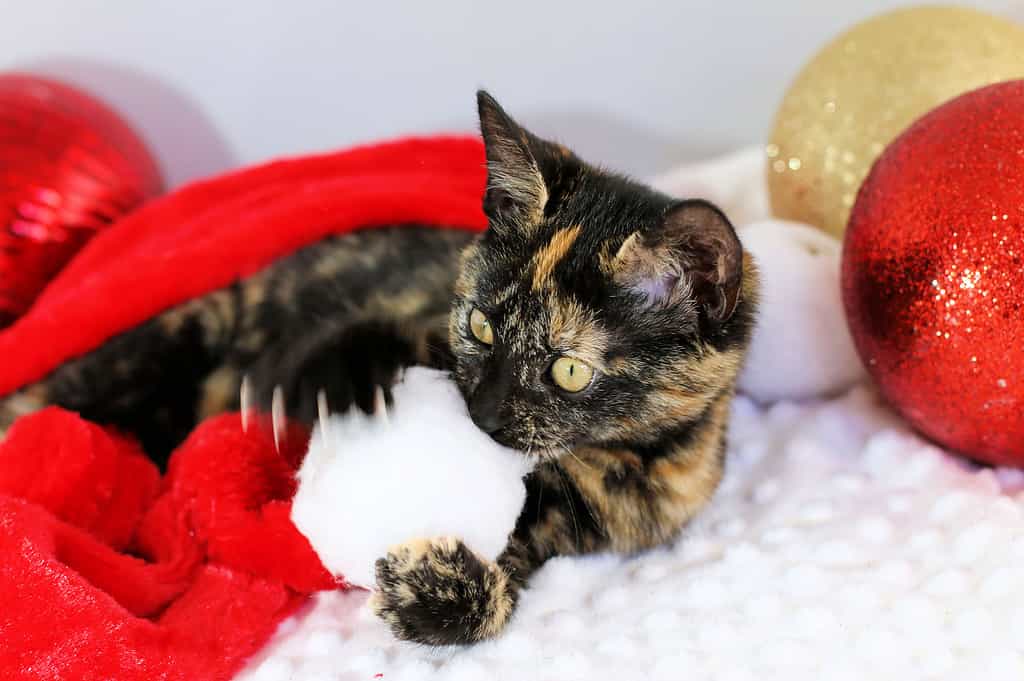
The
tortoise
shell coat mixes both black and orange, and is sometimes accented by brown or gold.
©Kelley Varisco/Shutterstock.com
Color-point
Unlike the tabby coat, a cat with a color-point coat features darker fur along the feet and tail, as well as their face. Most often, they are light brown, though the coat can be darker with age. The Siamese cat is a perfect example of this type of coat.
Bicolor and Tricolor
The name of this coat tells exactly how many colors the coat has. While bicolor coats combine white and one other color, tricolor cats will have a combination of white, red, and black. Bicolor cats often are the result of mixed breeding, while tricolor cats tend to be females.
Solid
Solid coats have no other colors, patterns, or other variations. Having a cat that is solidly grey, black, or white is much more common than any variation of brown.
Other coat patterns may arise in cat coats as well, including harlequin (mostly white with large color patches), locket (a white patch on the chest), mitted (completely white paws), and van (white with colors on the head and tail).
Though some hypoallergenic cats may not have fur (i.e., the sphinx), they will still have a gentle pattern on their skin.
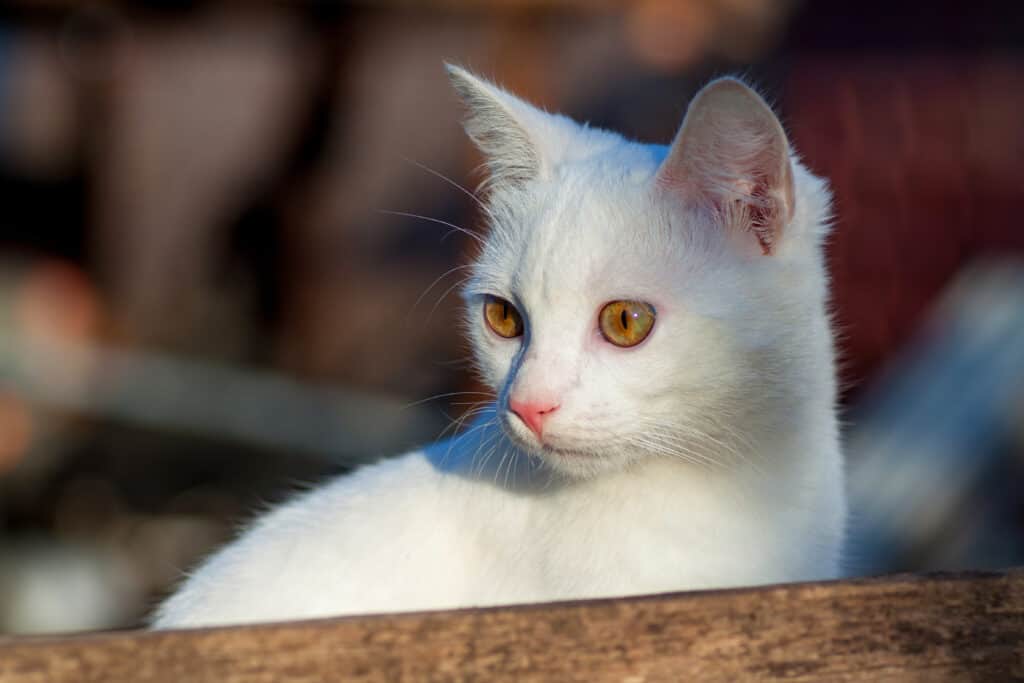
Russian white cats are a rare breed, with a solid snowy white fur that is soft and plush.
©iStock.com/Mironmax Studio
How Did Domestic Cats Evolve from Wild Cats?
The domestic cats that you know and love today date back to the Fertile Crescent, a wildcat from the Middle East. Some sources say that these wild animals existed up to 100,000 years ago, but they became domesticated as more farmers arose. With over 370 million pet cats in the world today, the wildcats only accounted originally for 40 species.
Farmers found the wildcats to be efficient hunters of pests (like mice) in their fields and barns. Like many communities, the agricultural impact of cats eventually led people in cities and small towns to keep the animals as pets as well.
Check out this article to learn how cats function in groups and what a group of cats is called!
Types of Cat Breeds
There are 73 standardized breeds of cats as recognized by the International Cat Association (TICA). Here’s a list of different cat breeds with a few characteristics:
- Abyssinian – Origin: Ethiopia. Coat: Short. Pattern: Ticked Tabby.
- Aegean – Origin: Greece. Coat: Semi-long. Pattern: Multi-color.
- American Bobtail – Origin: United States. Coat: Semi-long. Pattern: All.
- American Curl – Origin: United States. Coat: Semi-long. Pattern: All.
- American Ringtail – Origin: United States. Coat: Semi-long. Pattern: All.
- American Shorthair – Origin: United States. Coat: Short. Pattern: All.
- American Wirehair – Origin: United States. Coat: Rex. Pattern: All.
- Aphrodite Giant – Origin: Cypress. Coat: All. Pattern: All.
- Arabian Mau – Origin: Arabian Peninsula. Coat: Short. Pattern: All.
- Asian – Origin: Asia/Great Britain. Coat: Short. Pattern: Evenly solid.
- Asian Semi-longhair – Origin: Great Britain. Coat: Semi-long. Pattern: Evenly solid.
- Australian Mist – Origin: Australia. Coat: Short. Pattern: Spotted or marbled.
- Balinese – Origin: Thailand/United States. Coat: Long. Pattern: Colorpoint.
- Bambino – Origin: United States. Coat: Rex.
- Bengal – Origin: Asia/United States. Coat: Short. Pattern: Spotted, marbled, or rosetted.
- Birman – Origin: Burma/France. Coat: Semi-long. Pattern: Mitted colorpoint.
- Bombay – Origin: United States/Burma. Coat: Short. Pattern: Solid black.
- Brazilian Shorthair – Origin: Brazil. Coat: Short. Pattern: All.
- British Longhair – Origin: United Kingdom. Coat: Semi-long. Pattern: All.
- British Shorthair – Origin: United Kingdom. Coat: Short. Pattern: All.
- Burmese – Origin: Burma. Coat: Short. Pattern: Solid or tortoiseshell.
- Burmilla – Origin: United Kingdom. Coat: Short. Pattern: Solid with Shaded Silver and Silver Tipped.
- California Spangled – Origin: United States. Coat: Short. Pattern: Spotted Tabby.
- Chantilly-Tiffany – Origin: United States. Coat: Long. Pattern: Solid, classic tabby, spotted tabby and ticked tabby.
- Chartreux – Origin: France. Coat: Short. Pattern: Varied shades of blue.
- Chausie – Origin: United States. Coat: Short. Pattern: Solid black, black grizzled tabby and black ticked tabby.
- Colorpoint Shorthair – Origin: United Kingdom. Coat: Short. Pattern: Colorpoint.
- Corn Rex Cat (Cornish Rex) – Origin: Cornwall, United Kingdom. Coat: Short. Pattern: All.
- Cymric – Other names: Manx Longhair or Long-haired Manx. Origin: Isle of Man/United States/Canada. Coat: Long. Pattern: All.
- Cyprus – Origin: Cyprus. Coat: All. Pattern: All.
- Devon Rex – Origin: Devon, Great Britain. Coat. Rex. Pattern: All.
- Donskoy/Don Sphynx – Origin: Russia. Coat: Hairless. Pattern: Solid.
- Dragon Li/Chinese Li Hua – Origin: China. Coat: Short. Pattern: Ticked Tabby.
- Dwelf – Origin: United States. Coat: Hairless. Pattern: All.
- Egyptian Mau – Origin: Egypt. Coat: Short. Pattern: Spotted Tabby.
- European Shorthair – Origin: Continental Europe. Coat: Short. Pattern: All.
- Exotic Shorthair – Origin: United States. Coat: Short. Pattern: All.
- Foldex – Origin: Canada. Coat: Short. Pattern: All.
- German Rex – Origin: Germany. Coat: Rex. Pattern: All.
- Havana Brown –– Origin: United Kingdom/Thailand. Coat: Short. Pattern: Solid Brown.
- Highlander – Origin: United States. Coat: Short/Long. Pattern: All.
- Himalayan– Origin: United States/United Kingdome. Coat: Long. Pattern: Colorpoint. Other names: Colorpoint Persian.
- Japanese Bobtail – Origin: Japan. Coat: Short/Long. Pattern: All.
- Javanese– Origin: United States/Canada/Southeast Asia. Coat: Long. Pattern: Colorpoint. Other names: Colorpoint Longhair.
- Kanaani – Origin: Germany. Coat: Short. Pattern: Solid black, chocolate spotted tabby or cinnamon spotted tabby.
- Khao Manee – Origin: Thailand. Coat: Short. Pattern: Solid white.
- Kinkalow – Origin: United States. Coat: Short. Pattern: All.
- Korat – Origin: Thailand. Coat: Short. Pattern: Solid Blue.
- Korean Bobtail – Origin: Korea. Coat: Short/long. Pattern: Colorpoint.
- Kornja – Origin: Thailand. Coat: Short. Pattern: Solid black.
- Kurilian Bobtail – Origin: Eastern Russian/Japan. Coat: Short/long. Pattern: All.
- Lambkin – Origin: United States. Coat: Rex. Pattern: All.
- LaPerm – Origin: United States. Coat: Rex. Pattern: All.
- Lykoi – Origin: United States. Coat: Hairless. Pattern: Solid black roan.
- Maine Coon – Origin: United States. Coat: Semi-long/Long. Pattern: All.
- Manx – Origin: Isle of Man. Coat: Short/Long. Pattern: All.
- Mekong Bobtail – Origin: Russia. Coat: Short. Pattern: Colorpoint.
- Minskin – Origin: United States. Coat: Hairless. Pattern: All.
- Minuet – Origin: United States. Coat: Short/Long. Pattern: All.
- Munchkin – Origin: United States. Coat: Short/Long. Pattern: All.
- Nebelung – Origin: United States. Coat: Semi-long. Pattern: Solid blue.
- Norwegian Forest – Origin: Norway. Coat: Long. Pattern: All but Colorpoint.
- Ocicat – Origin: United States. Coat: Rex. Pattern: All.
- Ojos Azules – Origin: United States. Coat: Short. Pattern: Spotted Tabby.
- Oregon Rex (extinct) – Origin: United States. Coat: Rex.
- Oriental Bicolor – Origin: United States/United Kingdom/Thailand. Coat: Short. Pattern: Bicolor.
- Oriental Longhair – Origin: United States/United Kingdom/Thailand. Coat: Semi-long. Pattern: All.
- Oriental Shorthair – Origin: United States/United Kingdom/Thailand. Coat: Short. Pattern: All.
- Persian – Origin: United States/Europe/Iran. Coat: Long. Pattern: All but Colorpoint.
- Peterbald – Origin: Russia. Coat: Hairless, velour, brush, or strait coat. Pattern: All.
- Pixie-bob – Origin: United States. Coat: Short. Pattern: Spotted Tabby.
- Ragamuffin – Origin: United States. Coat: Long. Pattern: All.
- Ragdoll – Origin: United States. Coat: Long. Pattern: Colorpoint, mitted, or bicolor.
- Raas – Origin: Raas Island, Indonesia. Coat: Short. Pattern: Solid blue, solid cinnamon, or cinnamon colorpoint.
- Russian Blue – Origin: Russia. Coat: Short. Pattern: Solid blue.
- Russian White/Black/Tabby – Origin: Australia/Russia. Coat: Short. Pattern: Solid white, solid black and tabby.
- Sam Sawet – Origin: Thailand. Coat: Short. Pattern: Solid.
- Savannah – Origin: United States. Coat: Short. Pattern: Spotted.
- Scottish Fold Cat – Origin: United Kingdom (Scotland). Coat: Short/long. Pattern: All.
- Selkirk Rex – Origin: United States. Coat: Short/long. Pattern: All.
- Serengeti – Origin: United States. Coat: Short. Pattern: Spotted.
- Serrade Petit – Origin: France. Coat: Short. Pattern: Spotted Solid tan, solid orange and solid white.
- Siamese – Origin: United States/Europe/Thailand. Coat: Short. Pattern: Colorpoint.
- Siberian – Origin: Russia/Ukraine. Coat: Semi-long. Pattern: All.
- Singapura – Origin: United States/Singapore. Coat: Short. Pattern: Ticked Tabby.
- Snowshoe – Origin: United States. Coat: Short. Pattern: Mitted colorpoint.
- Sokoke – Origin: Kenya. Coat: Short. Pattern: Ticked Tabby.
- Somali – Origin: United States. Coat: Long. Pattern: Ticked Tabby.
- Sphynx – Origin: Europe/Canada. Coat: Hairless. Pattern: All.
- Suphalak – Origin: Thailand. Coat: Short. Pattern: Solid reddish-brown.
- Thai – Origin: Thailand. Coat: Short. Pattern: Colorpoint.
- Thai Lilac – Origin: Thailand. Coat: Short. Pattern: Solid Lilac and colorpoint.
- Tonkinese – Origin: United States/Canada. Coat: Short. Pattern: Coloproint, mink, or solid.
- Toybob – Origin: Russia. Coat: Short. Pattern: All.
- Toyger – Origin: United States. Coat: Short. Pattern: Mackerel Tabby.
- Turkish Angora – Origin: Turkey. Coat: Semi-long. Pattern: All.
- Turkish Van – Origin: Turkey. Coat: Semi-long. Pattern: Van pattern.
- Turkish Vankedisi – Origin: Turkey. Coat: Long. Pattern: Solid white.
- Ukranian Levkoy – Origin: Ukraine. Coat: Hairless. Pattern: Solid gray.
- York Chocolate – Origin: New York, United States. Coat: Long. Pattern: Solid chocolate, solid lilac and solid taupe or any of these colors with white.
Types of Cats Pictured
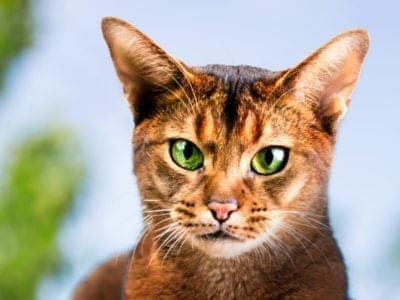
Abyssinian
One of the oldest cat breeds in the world!
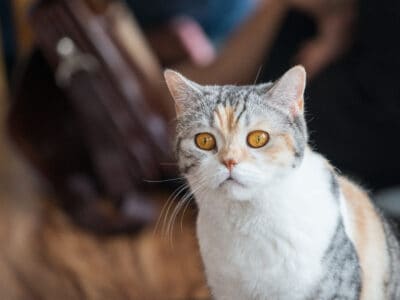
American Wirehair
American Wirehairs often play fetch with their owners
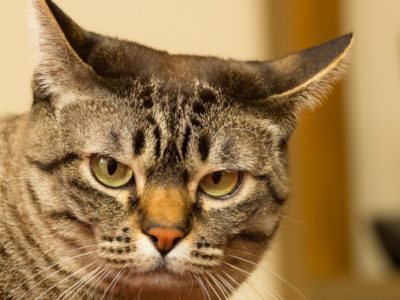
Australian Mist
The only cat breed to originate in Australia.
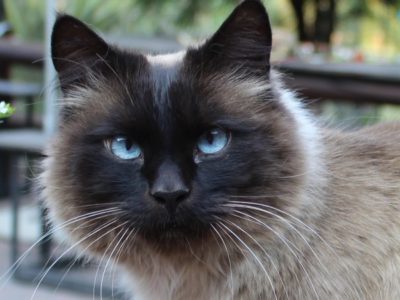
Balinese
Playful and energetic breed!
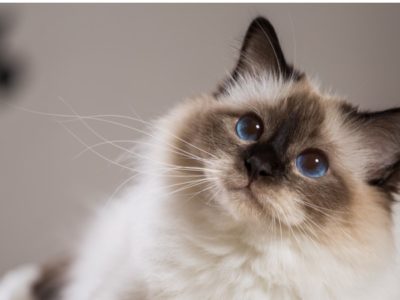
Birman
A blue-eyed beauty!
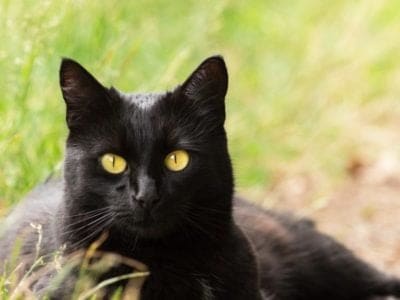
Bombay
Bred to look like a black panther!
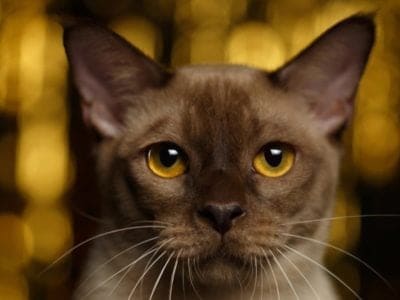
Burmese
Adoring, elegant and affectionate!
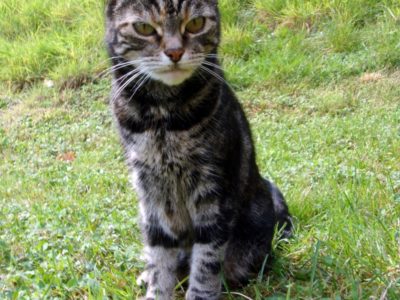
Cat
May have been domesticated up to 10,000 years ago.
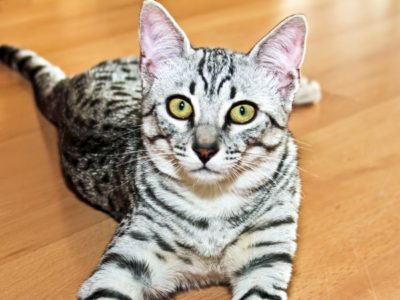
Egyptian Mau
An ancient breed of domestic cat!
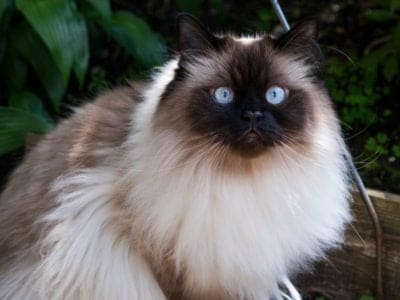
Himalayan
Also known as the Colorpoint Persian!
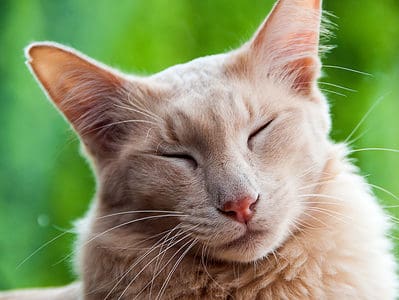
Javanese
Features that closely resemble a Siamese cat!
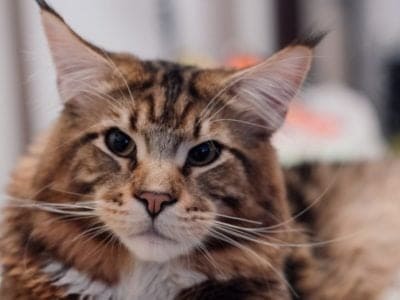
Maine Coon
Folklore says it's half cat, half raccoon!
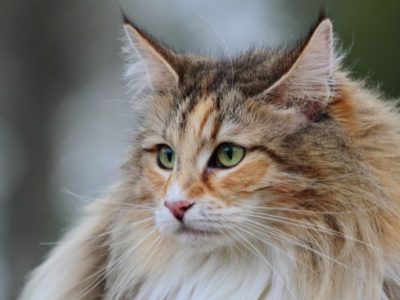
Norwegian Forest
Has a long, thick double coat of fur!
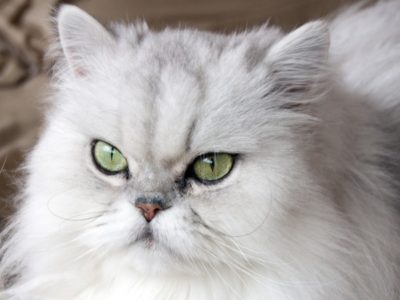
Persian
Thought to have originated in the Middle East!
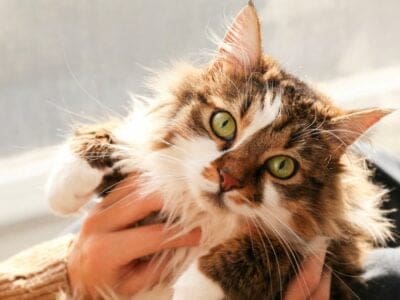
Ragamuffin
Often referred to as "puppy-like," Ragamuffin cats are intelligent, friendly and super personable.
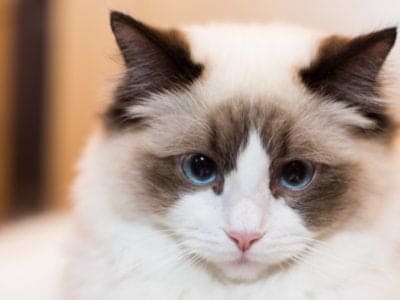
Ragdoll
One of the larger breeds of domestic cat!
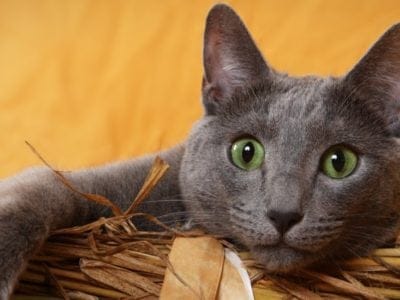
Russian Blue
First brought to the UK in the 1800s!
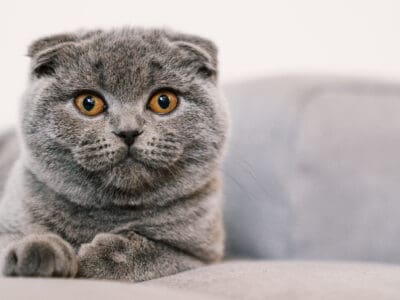
Scottish Fold Cat
The cutest mutation in the animal kingdom
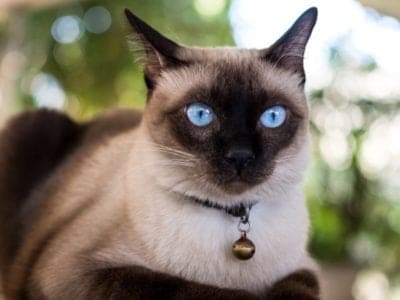
Siamese
Originated from temple cats in Thailand!
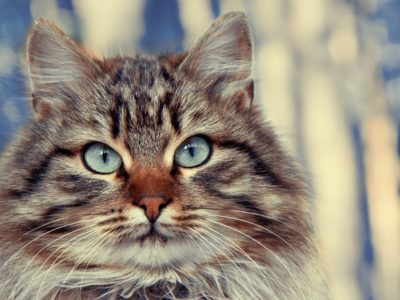
Siberian
An exceptionally agile jumper!
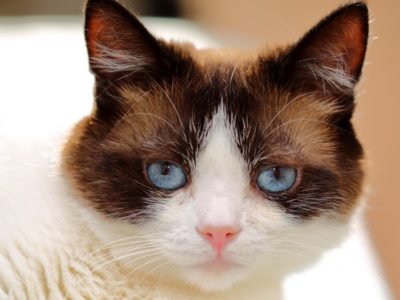
Snowshoe
Thought to have originated in the 1960s!
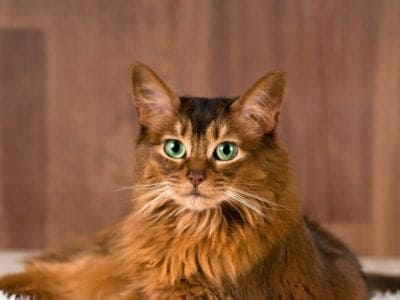
Somali
Active, intelligent and playful!
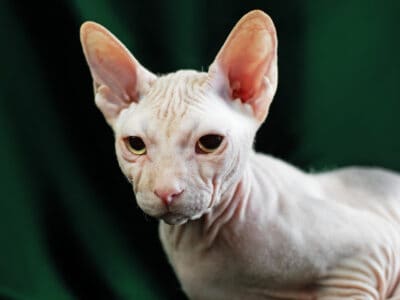
Sphynx
Many people believe that because the Sphynx doesn't have a lot of fur, they are easily maintained. However, their upkeep is demanding!
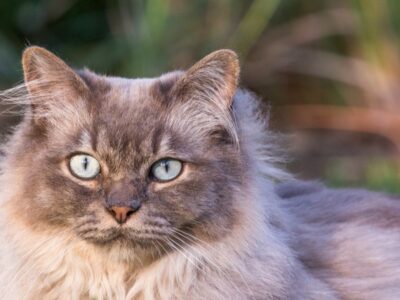
Tiffany
Chantilly cats are a mixed-breed cross between a Burmese cat and a long-haired Asian cat.
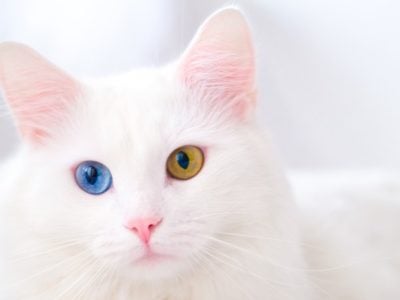
Turkish Angora
A breed that originated in central Turkey!
List of Cat Breeds
Cat Breeds FAQs (Frequently Asked Questions)
What are some examples of cute cats?
Some cute cats that are easy to come by include the Maine coon, the British shorthair, the Bengal, the Persian, and the Ragdoll. All of these cats have rather unique features, like a flat fat (Ragdoll), an extraordinarily large body (Maine coon), or a striking resemblance to the wild cat that they are named for (Bengal).
What types of foods are toxic to cats?
Avoid feeding cats raw meat and other raw proteins, like eggs. They should also avoid raw bones from meat. Cats should never consume onions, garlic, alcohol, chocolate, milk/dairy products, grapes, or raisins – all of these foods can cause detrimental effects on the kidneys and liver. They also put the cat at a fatal risk.
Dog food, due to the difference in nutrients from cat food, is very bad for their digestive system.
What are some examples of hypoallergenic cats?
To prevent an allergic reaction, some hypoallergenic cats include the Sphynx, the Russian Blue, the Cornish Rex, and the Oriental Shorthair. While these animals are bred to have less shedding and dander, there are no animals that have both no shedding and no dander.
What are some examples of black cat breeds?
Black cats are incredibly common, found in many different breeds. The Bombay cat is the most well-known, but the solid black coat is also found in the American and British shorthairs, Persian cats, and the Scottish fold. These cute cats are also available as mixed breeds.
Are lilies poisonous to dogs or cats?
Lilies are poisonous to dogs and cats. Although lilies are only mildly toxic to most dogs, they can be a much more serious threat to your feline friend. When a dog eats a lily, it may experience stomach issues, but usually nothing life-threatening. When a cat ingests lilies, the symptoms can range from mild to life-threatening
Are orchids poisonous for cats or dogs
Orchids, notably the Phalaenopsis Orchid (or Moth Orchid), are safe for dogs and cats to be around. These plants are one of the few ones that are considered non-toxic to both cats and dogs.
Are Onions Poisonous To Dogs Or Cats?
You may be surprised to learn that dogs and cats can become poisoned by all parts of the onion, including the leaves, flesh, skin, and juice, whether cooked or uncooked. And, cats and dogs are not just poisoned by the typical onion, but all vegetables in the onion family! That’s right; the entire onion family, whether they’re dehydrated or powdered, can deplete a pet’s red blood cells and lead to anemia.
Are Mums Poisonous To Dogs Or Cats?
There are several species of mums, all of which are deemed poisonous to dogs and cats. Even dried-up mums are harmful to pets. Scientists say mums are only “mildly toxic” to pets when compared to most toxic plants. Despite this, pet owners should still seek immediate medical attention if they notice any of the following toxic effects associated with mums:
Are Marigolds Poisonous To Dogs or Cats?
The ASCPA defines Marigolds as non-toxic to cats and dogs. But this is particularly peculiar to the Pot Marigold. Yet, if your dog or cat eats too many of these attractive flowers, they may experience negative effects like stomach upset. The side effect, however, is not caused by any toxicity from the flower but as a result of eating something unusual. On the other hand, the Tagetes species is known to create more issues for pets, particularly cats. This toxicity is usually relatively moderate, but it needs to
Are succulents poisonous to dog or cats?
Not all succulents are poisonous to dogs and cats. Succulents are great for pet owners, as most types are perfectly safe for pets. Sempervivum, Burros Tail, Christmas Cactus, Zebra Haworthia, e.t.c., are succulent species that are safe for pets. Other succulent species like the Jade plant, Aloe Vera, Fiddle leaf, e.t.c., are poisonous to dogs.Are succulents poisonous to dog or cats?
Are Begonias Poisonous To Dogs or Cats?
Despite being beautiful plants, begonias are poisonous to dogs and cats. So your pet shouldn’t eat any part of this houseplant. More than a thousand species of begonia exist and all are poisonous to animals. Although the roots contain most of the poison, all parts of begonias should be always kept out of the reach of your pets.
Are Petunias Poisonous To Dogs or Cats?
For pet-friendly gardeners, petunias are an excellent choice of flower. The petunia plant is not toxic to cats or dogs, making it a safe option for households with several pets. But this doesn’t make them a food option for your pets. Discourage your dogs and cat from eating houseplants whether they are toxic or not. So if your pet accidentally eats petunias, you have nothing to worry about. Non-toxic species of petunias include Grandiflora, Multiflora, Milli flora, and so on.
Are Frogs Poisonous To Dogs or Cats?
Although all frogs produce skin fluids, most of them are not poisonous to domestic pets. But this is not the case for pickerel and tree frogs. Both pickerel and tree frogs are commonly found in the United States. They release toxins in their skin as a defense whenever they are attacked by predators. And if your dog or cat bites these frogs, the toxins can make them sick.
What is the difference between a male cat and a female cat?
The key differences between male and female cats are in their genitalia, appearance territory marking, and behaviour. Male cats usually have a penis while female cats have a vulva. Besides, male cats have larger physical features especially larger cheeks their female counterparts. And to mark their territory, urine marking is a common attribute associated to male cats.
Who would win a fight between a cat and a raccoon?
A raccoon would win a fight against a cat. Raccoons are bigger than most cats, and it’s nearly impossible for the smaller animal to launch an attack that would kill the raccoon immediately. As such, the fight would break down into a desperate scramble, and the raccoon would win in that scenario.
Are acorns poisonous to cats?
Acorns can be harmful to cats if consumed in copious quantities.
Are azaleas poisonous to cats?
Grayanotoxin, a neurotoxin found in azaleas, is the source of the plant’s danger to your cat. Azalea pollen, petals, and leaves all contain the poison.
Are poinsettias poisonous to cats?
Poinsettias are not poisonous to cats. However, they are mildly toxic when ingested.
Are hibiscus poisonous to cats?
While most hibiscus species are safe for cats, some hibiscus varieties can be potentially hazardous to your cat.
Are hostas poisonous to cats?
It’s best to keep your cats away from hosta leaves, stems, and blooms, which are toxic to cats. They are toxic to cats because of the poison’s glycoside saponins.
What should you do if you find a lost cat?
If you find a lost cat there are many steps to take. You’ll want to find out if the cat has an owner and how to reconnect it if it does. It’s important to keep yourself and the cat safe as you take the first step in containing the cat to check for a collar while you provide food, water and comfort.
How long are cats pregnant?
A normal cat gestation period is between 63-67 days. However, anywhere between 61-72 days is considered normal. Because cats are so good at making kittens, getting your cat spayed or neutered as soon as they’re old is important.
Thank you for reading! Have some feedback for us? Contact the AZ Animals editorial team.




